In the far reaches of northeastern California, away from the state’s famed coastlines and bustling cities, lies a landscape that bubbles, steams, and sleeps. Lassen Volcanic National Park is a place of dramatic contrasts, where the Earth’s fiery interior breaks through to the surface amidst serene alpine lakes and tranquil evergreen forests. Often called a “mini-Yellowstone without the crowds,” Lassen offers an accessible, awe-inspiring journey into a world shaped by volcanic forces.
Home to all four types of volcanoes found in the world—shield, composite, cinder cone, and plug dome—this park is a living geology lesson. But you don’t need to be a scientist to appreciate its raw power and breathtaking beauty. Whether you’re seeking a challenging summit hike, a family-friendly lakeside stroll, or a chance to gaze at the Milky Way in its full glory, Lassen delivers an unforgettable adventure.
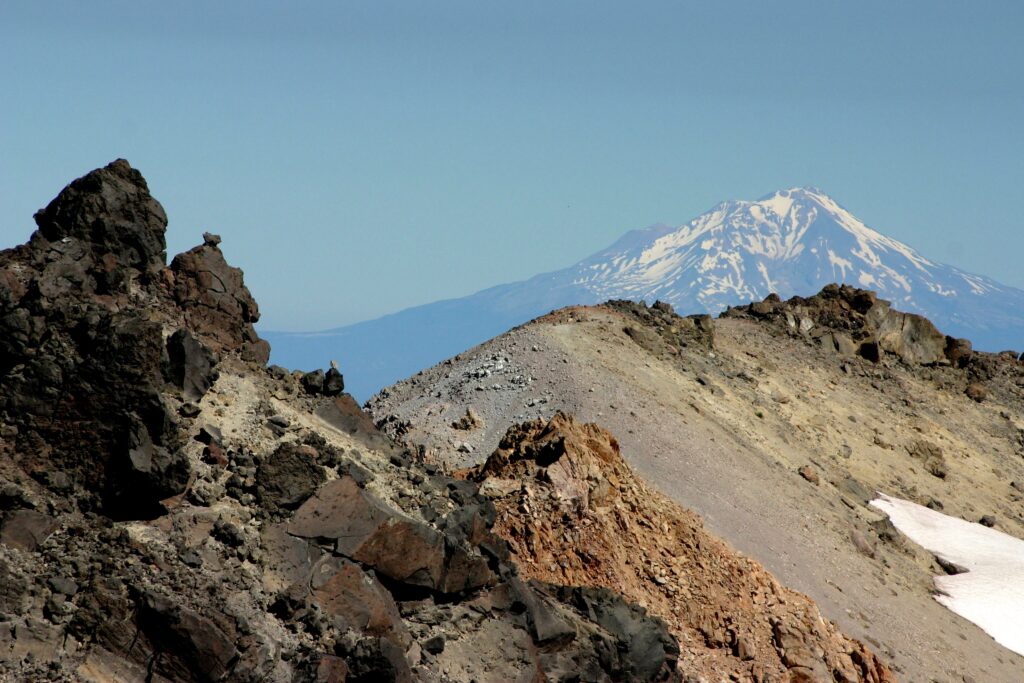
A Land Forged by Fire: The Hydrothermal Wonders
The main event for many visitors is the park’s remarkable collection of hydrothermal features. These bubbling, steaming landscapes are a direct link to the molten rock simmering deep beneath the surface. The must-see destination is Bumpass Hell, the largest hydrothermal area in the park. A scenic 3-mile roundtrip hike leads you to a wooden boardwalk that snakes through a surreal basin. Here, you’ll be mesmerized by the sights and sounds of hissing fumaroles (steam vents), bubbling mud pots that plop and gurgle, and crystal-clear pools boiling with otherworldly intensity. The air is thick with the distinct rotten-egg scent of sulfur, a powerful reminder of the untamed energy just beneath your feet.
For a more accessible, roadside taste of this geothermal activity, stop at Sulphur Works. Located just past the park’s southwest entrance, you can witness steaming vents and bubbling mud right from the parking area, making it a perfect quick stop for families with small children.
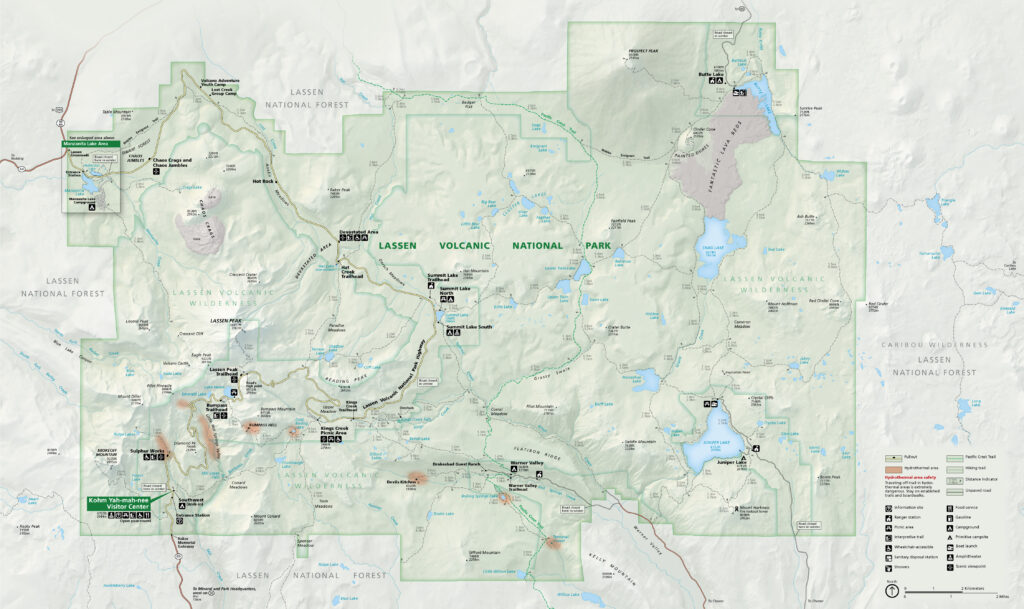
Summit a Volcano: Hiking for Every Skill Level
Lassen is a hiker’s paradise, offering over 150 miles of trails that cater to every ability. The trails here don’t just lead you through forests; they take you up volcanoes, around pristine lakes, and across lands still recovering from past eruptions.
For the ultimate challenge and reward, the Lassen Peak Trail is iconic. This strenuous 5-mile roundtrip hike takes you to the 10,457-foot summit of the largest plug dome volcano in the world. The switchbacks are tough and the altitude is real, but the 360-degree panoramic view from the top—overlooking the park’s Devastated Area and the distant Mount Shasta—is an unparalleled reward for your effort.
Another fascinating and unique hike is the trail to the top of Cinder Cone in the park’s remote Butte Lake area. This steep climb up loose volcanic scree is like walking on a giant sand dune, but the view from the rim is spectacular. You can gaze down into the volcano’s crater and out across the otherworldly landscape of the Painted Dunes and sprawling lava beds.
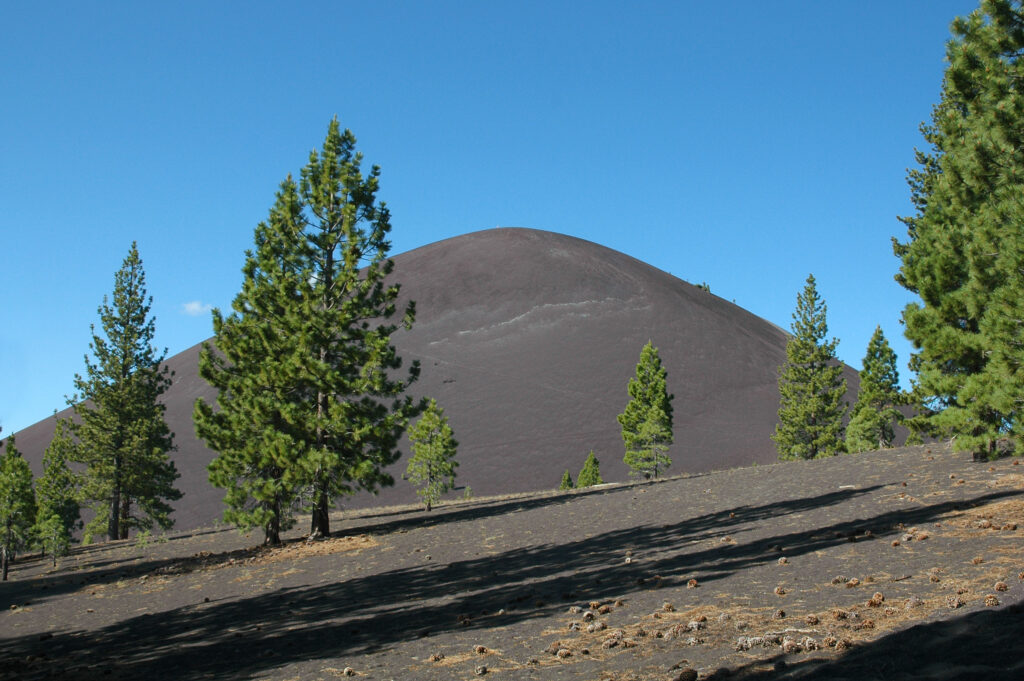
Beyond the Steam: Serene Lakes and Alpine Meadows
While its volcanic features are the main draw, Lassen’s gentler side is equally captivating. The park is dotted with dozens of crystal-clear alpine lakes, offering a cool and peaceful contrast to the steaming earth. Manzanita Lake, near the park’s northwest entrance, is perhaps the most famous. It offers stunning, postcard-perfect reflections of Lassen Peak on its calm surface. It’s an ideal spot for kayaking, fishing, or enjoying an easy, family-friendly stroll around its 1.8-mile perimeter loop.
Another gem is Lake Helen, located at the base of Lassen Peak. Known for its breathtakingly vibrant turquoise color, this frigid alpine lake remains partially frozen well into the summer. It’s a popular spot for photography and a great place to have a picnic while marveling at the sheer scale of the volcano above. In mid-summer, the park’s meadows burst into a tapestry of colorful wildflowers, adding another layer of delicate beauty to this rugged landscape.
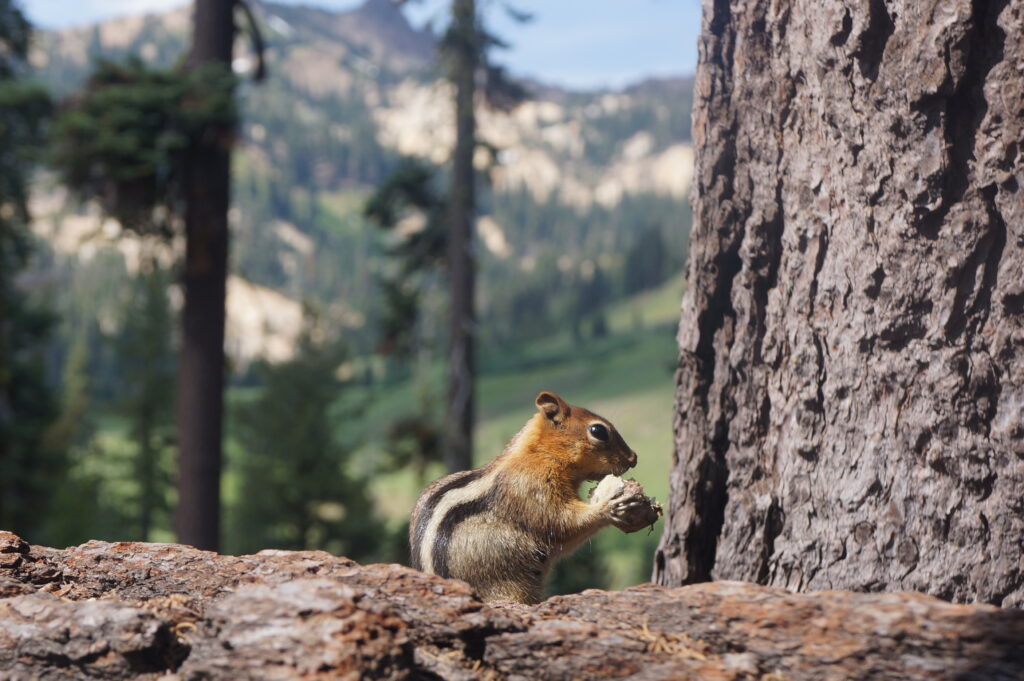
A Geological Masterpiece: The Painted Dunes
In the same remote corner of the park as Cinder Cone lies one of Lassen’s most stunning and surreal landscapes: the Painted Dunes. Formed when hot lava flows oxidized the ash deposits on the Cinder Cone volcano, these rolling hills are brushed with vibrant shades of orange and red. Set against the stark black of the surrounding lava beds, the dunes look like a watercolor painting come to life. This area showcases the artistic side of volcanic activity and is a dream for photographers, especially in the soft light of morning or late afternoon.
Under a Canopy of Stars: A Dark Sky Sanctuary
When the sun sets at Lassen, a different kind of spectacle begins. Thanks to its remote location and high elevation, the park boasts some of the darkest night skies remaining in the United States. In 2019, it was officially designated as an International Dark Sky Park. On a clear, moonless night, the stargazing here is simply phenomenal. The Milky Way cuts a brilliant path across the sky, and constellations pop with a clarity rarely seen in our light-polluted world. The annual Dark Sky Festival in August is a major draw, but any summer night spent at Lassen is an opportunity to connect with the cosmos.
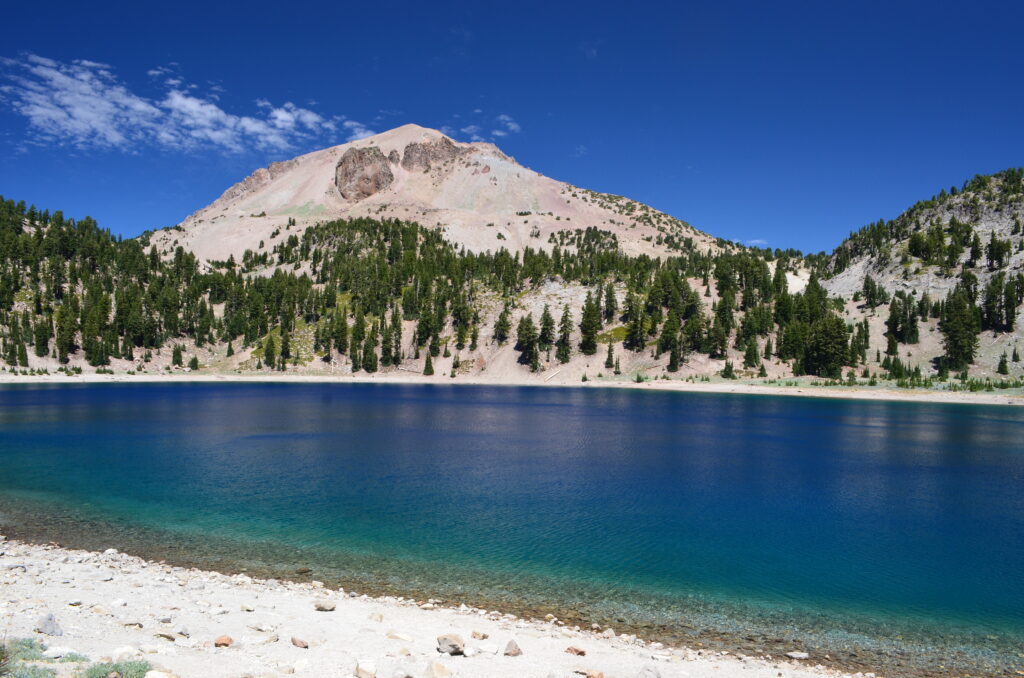
Planning Your Lassen Adventure: What to Know Before You Go
Lassen’s high altitude and heavy snowfall mean it has a relatively short visitor season. Careful planning is key to a successful trip.
- Best Time to Visit: The main park highway is typically only fully open from July through early October. This window is the best time for hiking and accessing all areas.
- Getting There: The park is located in northeastern California, about a three-hour drive from Sacramento or a one-hour drive from Redding.
- Where to Stay: Camping is the most popular option, with Manzanita Lake Campground being a favorite. Drakesbad Guest Ranch offers rustic lodging within the park, while nearby towns like Mineral and Chester have motels and inns.
- Logistics & Fees: There is a per-vehicle entrance fee. The 34-mile Lassen Volcanic National Park Highway is the main artery connecting the park’s highlights. Always check the official park website for road and trail conditions before you go, as they can change quickly.
- Safety: Stay on marked trails and boardwalks in hydrothermal areas, as the ground can be unstable and dangerously hot. Be prepared for high altitude, drink plenty of water, and be aware of wildlife, including black bears.
